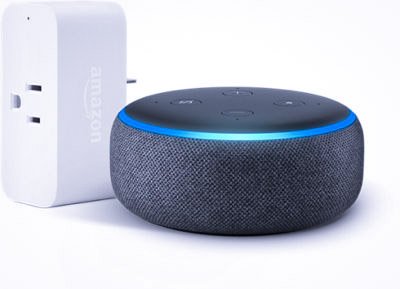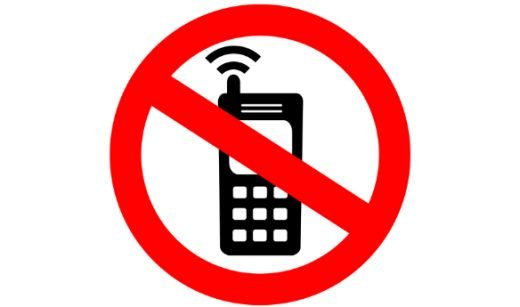In today’s digital age, more and more companies are embracing remote work as a viable option for their employees. With the rise of remote work, the need for effective remote employee monitoring software has become crucial.
This software not only allows employers to keep track of their remote workforce but also ensures that operations are streamlined and efficiency is maximized.
In this article, we will explore the importance of remote employee monitoring software, its benefits, common features, how to choose the right software for your business, implementation best practices, addressing privacy concerns, case studies of successful implementations, and integrating this software with other business tools.
The Importance of Remote Employee Monitoring Software
Remote employee monitoring software plays a vital role in today’s remote work landscape. It allows employers to have visibility into their employees’ activities, ensuring that work is being done efficiently and effectively. This software provides real-time data on employee productivity, task completion, and overall performance. By having this information at hand, employers can make informed decisions, set realistic goals, and identify areas that require improvement.
Moreover, remote employee monitoring software fosters accountability among employees. Knowing that their work is being monitored encourages remote workers to stay focused, meet deadlines, and deliver high-quality results. It also promotes a sense of trust and transparency between employers and employees, as expectations and performance are clearly communicated and measured.
Also read: The Benefits of Software Use Monitoring
Benefits of Using Remote Employee Monitoring Software
Implementing remote employee monitoring software brings a multitude of benefits to businesses. Firstly, it allows employers to accurately measure employee productivity and performance. By monitoring the time spent on tasks, the software provides insights into how efficiently employees are utilizing their working hours. This data can be used to identify bottlenecks in workflows, allocate resources effectively, and optimize productivity.
Secondly, remote employee monitoring software improves communication and collaboration among remote teams. With features such as screen sharing, video conferencing, and instant messaging, employees can easily connect and work together regardless of their physical locations. This fosters a sense of camaraderie and teamwork, leading to better overall performance.
Additionally, this software enhances data security and protects sensitive company information. With built-in security measures such as encrypted communication channels and access controls, employers can ensure that confidential data remains protected even in a remote work environment.
Common Features of Remote Employee Monitoring Software
Remote employee monitoring software comes equipped with a range of features designed to facilitate efficient remote work. Some common features include:
Time Tracking
This feature allows employers to monitor the time spent on various tasks and projects. It provides accurate data on how employees allocate their working hours, enabling employers to optimize time management and identify areas for improvement.
Activity Monitoring
Activity monitoring tracks employees’ computer activities, such as websites visited, applications used, and files accessed. It provides insights into how employees utilize their workstations and identifies any potential distractions or time-wasting activities.
Screenshots and Screen Recording
Screenshots and screen recording features capture snapshots or videos of employees’ screens at regular intervals or when certain triggers are met. This allows employers to visually review employees’ work and ensure they are on track and following guidelines.
Productivity Analytics
Productivity analytics provide in-depth reports and analytics on employee performance, including time spent on tasks, breaks taken, and overall productivity levels. This data helps employers identify patterns, measure efficiency, and make data-driven decisions.
Employee Communication and Collaboration Tools
Many remote employee monitoring software solutions include communication and collaboration tools such as video conferencing, instant messaging, and file sharing. These features facilitate seamless communication, foster collaboration, and ensure remote teams can work together effectively.
How to Choose the Right Remote Employee Monitoring Software for Your Business
When selecting remote employee monitoring software for your business, it’s important to consider several factors to ensure you choose the right solution. Here are some key points to keep in mind:
Define Your Objectives and Needs
Before exploring different software options, clearly define your objectives and needs. Consider the specific features your organization requires and the goals you want to achieve with the software. This will help narrow down your options and ensure you choose a solution that aligns with your business requirements.
Evaluate Features and Ease of Use
Carefully evaluate the features offered by different remote employee monitoring software solutions. Consider which features are essential for your business and how intuitive and user-friendly the software is. A complex and difficult-to-use system may lead to employee resistance and hinder adoption.
Also read: 5 Ways On How Influencers Make Money Online
Consider Integration Capabilities
If your business already uses other software tools, consider the integration capabilities of the remote employee monitoring software. Seamless integration with existing systems can streamline workflows and make it easier to manage employee monitoring alongside other business processes.
Ensure Data Security and Privacy Compliance
Data security and privacy are of utmost importance when implementing remote employee monitoring software. Ensure that the software you choose has robust security measures in place, including encryption and access controls. It should also comply with relevant data protection regulations to safeguard employee privacy.
Research Customer Reviews and Reputation
Research customer reviews and the reputation of the software provider. Look for feedback from businesses similar to yours and consider their experiences with the software. This will give you insights into the reliability, customer support, and overall satisfaction of the solution.
Once you have considered these factors, you will be better equipped to choose the right remote employee monitoring software that meets your organization’s needs.
Implementing Remote Employee Monitoring Software in Your Organization
Implementing remote employee monitoring software requires careful planning and communication to ensure a smooth transition. Here are some best practices to consider:
Clearly Communicate the Purpose and Benefits
Before implementing the software, communicate the purpose and benefits to your employees. Emphasize that the software is not intended to micromanage or invade privacy but rather to enhance productivity, streamline operations, and improve collaboration. Address any concerns or questions your employees may have to foster a positive and transparent work environment.
Establish Transparent Monitoring Policies
Establish clear and transparent monitoring policies that outline what will be monitored, how the data will be used, and the steps taken to protect employee privacy. Involve employees in the policy-making process to ensure their concerns are considered and addressed. By establishing these policies, you create a culture of trust and accountability.
Provide Training and Support
Offer comprehensive training and support to employees to ensure they understand how to effectively use the remote employee monitoring software. Conduct training sessions, provide user guides, and offer ongoing support to address any questions or issues that may arise. This will help employees feel comfortable and confident using the software.
Use Data Wisely and Responsibly
Collecting data through remote employee monitoring software is only valuable if it is used wisely and responsibly. Avoid using the software as a tool for micromanagement and focus on using the insights gained to optimize workflows, identify training needs, and improve overall productivity. Communicate the purpose behind data collection and ensure it is used to benefit both the organization and its employees.
By following these best practices, you can effectively implement remote employee monitoring software and maximize its benefits for your organization.
Also read: Top 5 Best Free PDF Editor Online Sites
Addressing Privacy Concerns with Remote Employee Monitoring Software
Privacy concerns are often raised when implementing remote employee monitoring software. To address these concerns, it is essential to prioritize employee privacy and establish clear guidelines. Here are some strategies for addressing privacy concerns:
Be Transparent About Monitoring
Clearly communicate to employees that remote monitoring software will be implemented, explaining the purpose, benefits, and scope of monitoring. Ensure employees understand that monitoring is intended to enhance productivity and not as a means of invasive surveillance.
Establish Clear Data Protection Policies
Develop comprehensive data protection policies that outline how the collected data will be stored, used, and protected. Ensure these policies comply with relevant data protection regulations and address employee privacy concerns. Regularly review and update these policies as needed to maintain compliance and transparency.
Limit Monitoring to Work-Related Activities
Focus on monitoring work-related activities and avoid monitoring personal activities or invading employees’ privacy outside of work hours. Clearly define what constitutes work-related activities and ensure monitoring is limited to these areas.
Safeguard Data Security
Implement robust data security measures to protect the collected data. This includes encryption, access controls, and secure storage methods. Regularly audit and assess the security of the software and make updates as necessary to address any vulnerabilities.
Obtain Consent and Involve Employees
Obtain employee consent before implementing remote employee monitoring software. Involve employees in the decision-making process, address their concerns, and seek feedback throughout the implementation and usage of the software. This ensures that employees feel valued and their privacy is respected.
By proactively addressing privacy concerns and implementing appropriate measures, you can create a transparent and privacy-conscious environment when utilizing remote employee monitoring software.
Case Studies: Companies that have Successfully Implemented Remote Employee Monitoring Software
Many companies have successfully implemented remote employee monitoring software and reaped the benefits. Let’s take a look at a few case studies:
Case Study 1: Company XYZ
Company XYZ, a global software development company, implemented remote employee monitoring software to track the productivity and performance of their remote teams. By monitoring time spent on tasks and analyzing productivity data, they were able to identify areas for improvement and optimize their workflows. This resulted in a significant increase in productivity and a decrease in project completion time.
Case Study 2: Company ABC
Company ABC, a marketing agency with a distributed workforce, implemented remote employee monitoring software to enhance collaboration and streamline communication. By utilizing the software’s communication and collaboration features, they were able to connect their remote teams seamlessly. This led to improved coordination, faster decision-making, and increased client satisfaction.
Case Study 3: Company DEF
Company DEF, a customer support center with remote agents, implemented remote employee monitoring software to ensure consistent service quality and adherence to company guidelines. By monitoring employee activities and utilizing screen recording features, they were able to identify training needs and provide targeted coaching. This resulted in an improved customer experience and higher customer satisfaction ratings.
These case studies highlight the diverse ways in which remote employee monitoring software can be successfully implemented and tailored to meet the specific needs of different businesses.
Integrating Remote Employee Monitoring Software with Other Business Tools
To further enhance productivity and streamline operations, integrating remote employee monitoring software with other business tools can be highly beneficial. Here are some key integrations to consider:
Project Management Software
Integrating remote employee monitoring software with project management software allows for seamless tracking of tasks, deadlines, and overall project progress. This integration ensures that employee monitoring data is directly linked to project milestones and provides a comprehensive overview of project performance.
Communication and Collaboration Tools
Integrating remote employee monitoring software with communication and collaboration tools, such as team messaging platforms or video conferencing software, enables real-time monitoring and enhances team collaboration. This integration ensures that employee monitoring data is easily accessible within the communication tools, facilitating efficient communication and collaboration.
HR and Payroll Systems
Integrating remote employee monitoring software with HR and payroll systems streamlines administrative processes. This integration allows for accurate tracking of employee attendance, time worked, and productivity, which can be directly linked to payroll calculations and HR management.
Customer Relationship Management (CRM) Software
Integrating remote employee monitoring software with CRM software provides valuable insights into the customer support and sales process. This integration enables the tracking of employee activities related to customer interactions, helping identify areas for improvement and enhancing customer satisfaction.
By integrating remote employee monitoring software with other business tools, you can create a cohesive and efficient workflow that maximizes productivity and enhances overall operations.
Conclusion
In conclusion, remote employee monitoring software is a valuable tool for businesses embracing remote work. It helps streamline operations, maximize efficiency, and foster a productive and accountable work environment. By accurately measuring employee productivity, providing real-time data, and facilitating seamless communication and collaboration, this software empowers businesses to thrive in the remote work landscape.
When choosing remote employee monitoring software, consider your business objectives, evaluate features and ease of use, ensure integration capabilities, prioritize data security and privacy compliance, and research customer reviews.
Implement the software with clear communication, transparent monitoring policies, comprehensive training, and responsible data usage. Address privacy concerns by being transparent, establishing clear data protection policies, and involving employees in the process.
Learn from successful case studies, integrate the software with other business tools, and continuously assess and optimize its usage. With the right remote employee monitoring software in place, businesses can effectively navigate the challenges of remote work, streamline operations, and maximize efficiency.
Now is the time to embrace remote employee monitoring software and unlock the full potential of your remote workforce. Start streamlining your operations and maximizing efficiency today!






![Granny Unblocked Game For School [WTF, 76, 911] – Play Online Granny unblocked](https://nexkinproblog.com/wp-content/uploads/2022/11/PSX_20221106_180356.jpg)
![Wheelie Bike Unblocked Game 911 [66, 76] – Play For Free Wheelie Bike unblocked](https://nexkinproblog.com/wp-content/uploads/2022/11/PSX_20221105_121709.jpg)